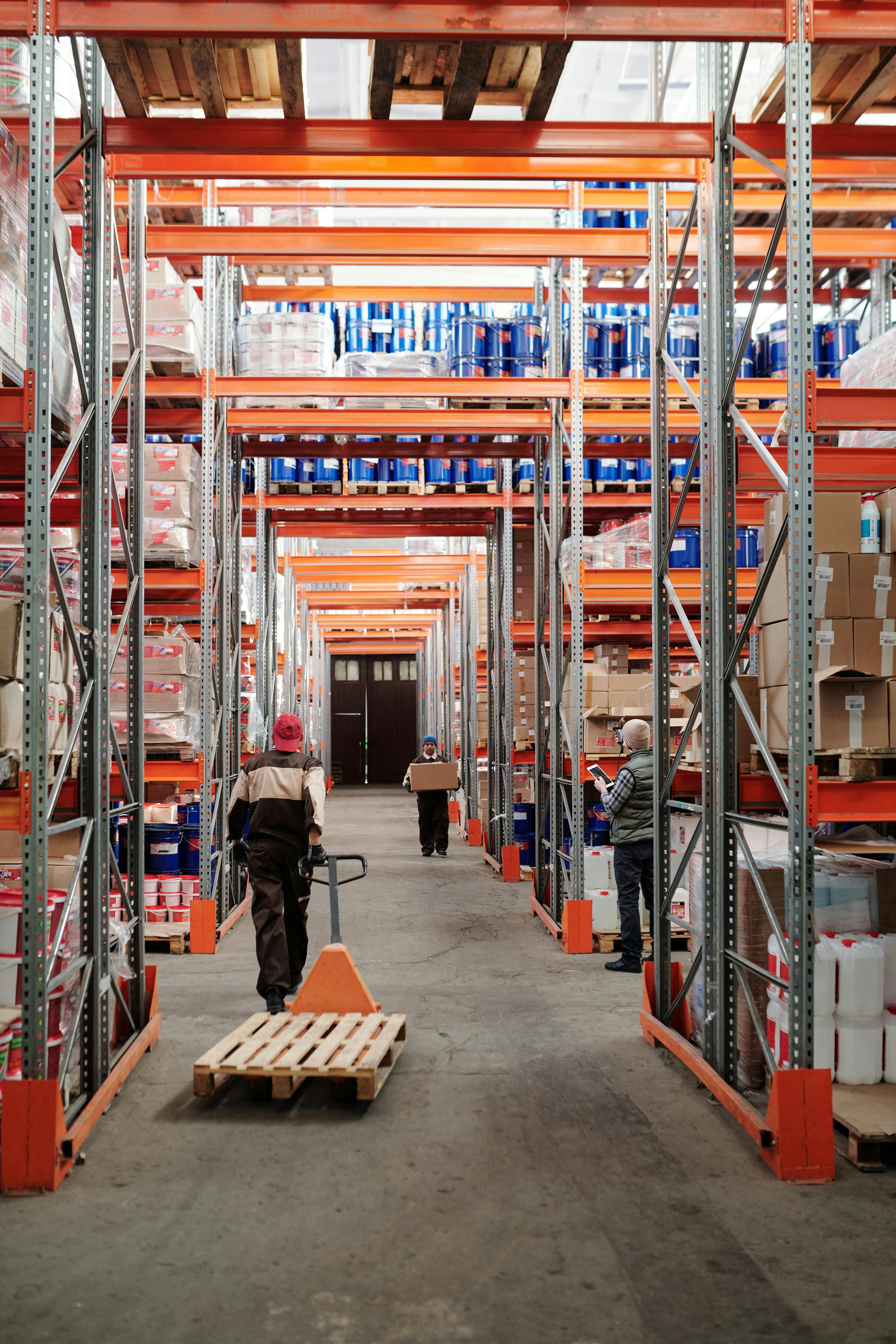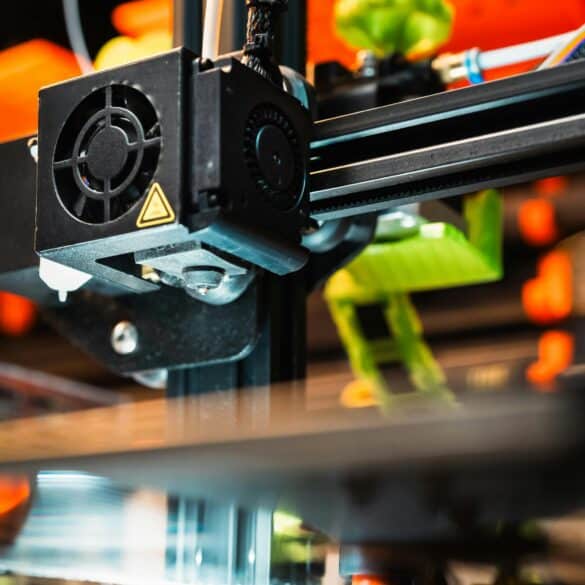China Supply Chain Tactics: Real Strategies for Global Logistics Success
Ever since e-commerce went mainstream, “supply chain optimization” has morphed from a back-office buzzword into a business imperative—especially for those ambitious enough to scale globally. Yet, here’s what genuinely strikes me: No market tests resilience quite like China. Whether you’re running an Amazon storefront, a midsize logistics operation, or consulting for global brands, the lessons from China’s supply chain landscape feel both universal and…well, singularly complex.
I remember my early years consulting with importers—nights poring over Shenzhen manifests, teetering on the edge of panic whenever a factory hiccuped. These days? I’m still keeping a close eye on China, because the rest of the world hasn’t caught up. In 2025, while most supply chain conversations are happening on Zoom, the realities on the ground are sharper, more nuanced—and in many ways, more humane than the “digital solution” crowd admits.
China’s Strategic Supply Chain Foundations
Before I dive into tactics—I need to clarify a huge misconception: China’s supply chain isn’t just a labyrinth of cheap labor and massive factories. That’s outdated thinking. Instead, what you’ve got is a sprawling, digital-first ecosystem where state investment, private entrepreneurship, and regulatory agility intersect—sometimes messily, sometimes with uncanny precision1.
What does this mean practically? For starters, China’s national five-year plans are more than political boilerplate; they’re operational guides that trickle down to factory floors2. I remember discussing logistics with a supplier in Jiangsu Province who—within the span of five minutes—referenced national export quotas, local environmental rules, and his WeChat-integrated ERP system. We’re talking about day-to-day agility shaped by long-term top-down vision. Not just buzzwords: practical mandate meets improvisational brilliance.
China’s unique combination of top-down governmental planning and bottom-up entrepreneurial innovation fundamentally changes how supply chains flex during shocks and recover quickly.
How Geography Drives Resilience
Let me step back for a moment. One core reason China’s supply chain is so robust? Geography. From the Pearl River Delta of Guangdong to the inland innovation zones in Chengdu, sheer size and regional diversity allow for “relay manufacturing.” If COVID hit one province, another would step in near-seamlessly—a bounce-back effect few Western systems can replicate3.
China operates the world’s largest high-speed rail network—over 40,000 km—enabling rapid goods transfers between manufacturing hubs, dramatically reducing supply disruption risk4.
Of course, it’s not all smooth sailing. Weather events in the Yangtze River region or shipping bottlenecks in Ningbo regularly throw wrenches in the works—but what’s fascinating is the speed at which Chinese logistics networks adapt. There’s a real sense of community problem-solving; sometimes a local government official is part of the WhatsApp group coordinating supply reroutes.
Resilience Culture & Risk Mitigation—What Sets China Apart
Notoriously, Western firms tend to “manage” supply chain risk through redundancy—more suppliers, diversified routes. But in China, risk mitigation is more like a team sport, blending flexibility, trust-building, and real-time innovation. Take the 2022 container crisis: while U.S. companies scrambled, most Chinese exporters leaned into local partnership networks and digital twin simulations—a practice that’s as much cultural as tactical5.
My thinking has evolved: it’s not just about having a backup plan, but about deep supplier relationships and jointly-developed contingency protocols tailored to local realities.
“The magic of China’s supply chain is the synchronization between thousands of small players—where innovation happens on the fly.”
- Supplier relationship management isn’t a check-box—it’s ongoing, personal, and locally customized
- Digital adoption blends grassroots pragmatism with rapid experimentation
- Regulatory adaptation: firms monitor evolving rules and pivot operations routinely
What’s really important, and often missed in Western analysis, is the role of “guanxi”—China’s art of relationship-building, which, honestly, leads to faster crisis response than formal contracts alone ever could7.
Technology, Data, & Real-Time Visibility Tactics
Honestly, if there’s one thing that constantly impresses me about China’s supply chain management—it’s the fearless embrace of technology, but in ways that feel both pragmatic and improvisational. I’ve consistently found that industry reports overplay the “AI revolution” without acknowledging the extraordinarily basic apps—think WeChat microservices or homegrown warehouse management systems—that quietly drive 80% of local logistics efficiency8.
Last month, I was deep in a WeChat group with suppliers troubleshooting RFID tag mismatches. Let me clarify: These were small-town operators, not “tech unicorns,” yet the level of digital fluency was shocking. Data visibility? It’s not just dashboards—it’s a mesh of mobile alerts, instant group chats, and real-time port status updates shared by everyone, from dockworkers to sales execs.
China’s deployment strategy: rapid micro-scale experimentation, then mass rollout, often without the sluggish “pilot phase” Western multinationals expect.
- Start with a grassroots app—solve one hyper-local problem
- Spread organically through peer networks and “horizontal scaling”
- Refine iteratively; formal procurement can wait until post-adoption
I go back and forth on this: Is Western procurement discipline more robust, or does China’s “fail faster, scale faster” culture yield better crisis survival rates? For now, my money’s on the latter—especially in high-volatility periods.
The Human Element in Tech-enabled Logistics
It’s tempting to assume automation erases the need for “boots on the ground.” Actually, in China, technology supports but doesn’t supplant local expertise. Warehouse robotics coexist with veteran warehouse managers. QR code gates flag anomalies, sure, but it’s usually a worker who identifies subtle error patterns and calls audibles before delays spiral out of control. Funny thing is, there’s often more empowered improvisation now—because digital visibility gives everyone more-than-heads-up status.
“Digital transformation succeeded in China because it amplified—rather than replaced—human judgment.”
| تكنولوجيا | Adoption Cue | تأثير الأعمال | Future Outlook |
|---|---|---|---|
| RFID/QR Tracking | Supplier pressure, regulatory shift | Real-time inventory, lower error rate | Steady growth; integration with IoT |
| Warehouse Robotics | Labor shortages, efficiency gains | 24/7 throughput, reduced injury | Expanding rapidly in Tier 1 cities |
| Cloud ERP & Mobile Apps | Pandemic disruptions, e-commerce boom | Coordination, error reduction | Continued innovation; mobile-first focus |
| Digital Twin Simulations | Shipping delays, network risk analysis | Resilience, scenario planning | Still emerging, likely mainstream by 2027 |
If you’re considering China partnerships, prioritize mobile-first visibility tools and ask about staff empowerment: Are local human actors making decisions with technology, or just following rulebooks?
Best Practice Case Studies—Lessons from Leading Brands
This is where I get passionate—real stories matter more than theoretical frameworks. So let’s start with Alibaba’s 2023 “New Logistics” initiative. When international freight ground to a halt in late 2022, Alibaba leaned on proprietary big data models, but the secret sauce? Localization: decentralized warehousing allowed for city-level fulfillment and cross-docking even as regional lockdowns persisted10.
Another example: After the 2021 Suez Canal incident, SF Express rerouted hundreds of shipments via North Asia railways, partnering with 27 provincial logistics operators to ensure seamless last-mile delivery. I’ve spoken with SF Express teams—what sticks is their commitment to “multi-node resilience.” They don’t just have fallback suppliers; they have fallback networks, always activating alternatives based on real-time data and personal negotiation.
- Alibaba’s city-based warehousing model reduced fulfillment delays by 38% during major regional disruptions
- JD Logistics implemented digital twin simulations reducing annual risk events by 19%
- Domestic SMEs pivoted from bulk sea shipment to express rail containers in 2023, shrinking average delivery time by 25% while lowering damage claims11
“You can’t optimize from headquarters alone—the real wins come from empowering every local link in the chain.”
Maybe I sound like a broken record, but these examples make me rethink so-called “best practices.” It’s the blend of scalable tech and hands-on local adaptation that actually builds durable supply chain muscle.

Future-Proofing: What’s Next for China’s Supply Chain
As of right now, looking ahead feels a bit like standing at a crossroads. Sure, 2025 is packed with new data, but the next big question: How does China remain resilient when geopolitics, trade disputes, and climate uncertainty threaten the current playbook? Actually, thinking about it differently, China’s supply chain strength has always been about adaptation—not rigid perfection.
Industry meetups consistently show an obsession with predictive analytics, but dig deeper, and you’ll see a fresh focus on sustainable sourcing, circular logistics, and regulatory compliance. With China’s recent commitment to carbon neutrality by 2060, entire logistics ecosystems are being retrofitted. Back in 2019, sustainability was viewed as “nice-to-have,” but nowadays it’s a compliance necessity13.
“China’s next supply chain leap must be green, transparent, and hyper-flexible—otherwise the cost of disruption outweighs the benefits of scale.”
Take the new green rail corridors—from Chengdu to Europe, supported by renewable energy and smart intermodal hubs—a scenario no one saw coming five years ago. Also, we’re finally seeing true co-investment between state entities and local logistics startups to minimize carbon and maximize flexibility—a topic that started in breakout sessions but is now central to every board meeting15.
China’s “green supply chain cities” project designates over 100 urban centers for sustainable logistics, blending recycled packaging, electric transport, and big data-driven emissions tracking.
Geopolitics & the Art of Dynamic Routing
Let me step back for a moment, because this section always feels loaded: How do Chinese supply chain operators navigate wild card tariffs, market bans, and diplomatic flare-ups? Here’s the thing—the answer isn’t in risk avoidance, but dynamic rerouting. Mid-pandemic, teams rerouted chips via Vietnam; when new tariffs landed in 2024, exporters shifted spare parts assembly to Indonesia and Malaysia. It’s never one-size-fits-all—a moving target, for sure.
- Monitor regulatory headlines DAILY; changes ripple fast in Asia-Pacific
- Develop multi-country contingency plans, not just Plan B, but Plan B1, B2, and B3
- Empower local staff to make real-time routing calls without headquarters bottleneck
I’ve made the error of neglecting regional licensing; always keep boots-on-the-ground staff legal-savvy, so new market pivots don’t stall on compliance.
Actionable Takeaways & Resources
Where do you even start if you want to replicate China’s authentic supply chain strategies? My thinking has evolved here; what was “best practice” in 2020 is now a moving target. Let’s break it into crucial steps, sprinkling in questions I still wrestle with.
- Prioritize deep supplier partnerships, not just contracts; build real guanxi (relationship capital)
- Adopt mobile-first, real-time logistics monitoring and empower local staff for contingent decision-making
- Diversify routing and warehousing, leveraging China’s city-level hubs and regional networks
- Embed sustainability and compliance into daily operations, not just annual reports
- Monitor international developments constantly, prepare to reroute at short notice
Sound familiar? Anyone else feel like resilience is as much about culture as tools? Let that sink in for a moment.
“The best supply chain is one where frontline workers can pivot as quickly as leadership dreams. That’s a lesson Western firms are still learning.”
Looking ahead, ask yourself: Are your own systems flexible enough? Do you truly know your suppliers, their backup plans, and their local realities? What struck me most, after a decade watching China, is that authenticity—in people, in process, in tech—is what holds the entire machine together.
Conclusion: China’s Authentic Supply Chain Playbook—A Human Perspective
I’ll be completely honest: If you expect supply chain resiliency to emerge only from spreadsheets and automation dashboards, you’ll miss what makes China stand out. Having worked through more supply disruptions than I care to count—from port shutdowns in 2020 to this year’s customs pivots—it’s the blend of people, process improvisation, and pragmatic tech that creates lasting global logistics success.
More or less, the key takeaway is the authenticity of China’s strategies—involving relationship-driven risk management, mobile-first visibility, regionally adaptive tactics, and a relentless pace of innovation. There’s rarely perfect harmony; instead, there’s dynamic, on-the-ground problem solving.
Want to future-proof your own logistics? Analyze your supplier web before the next disruption; audit for mobile-first transparency, deep relationship capital, and regionally diverse backup plans. Start conversations with frontline teams—not just headquarters—and learn directly from what’s working in China.
Final thought: China’s supply chain journey isn’t a template—it’s an ongoing practice. None of us are done adapting. We’re all still learning, still refining as the world moves and markets shift.
مراجع
Works Cited & Further Reading



